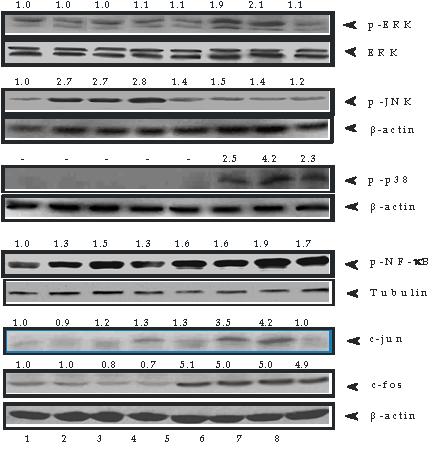8.Role of mitogen activated protein kinases in skin tumorigenicity of patulin |
WHO has highlighted the need to evaluate dermal toxicity of mycotoxins including Patulin (PAT), detected in several fruits. In this study the skin carcinogenic potential of topically applied PAT was investigated. Single topical application of PAT (400 nmol) showed enhanced cell proliferation (~2 fold), along with increased generation of ROS and activation of ERK, p38 and JNK MAPKs, in mouse skin. PAT exposure also showed activation of downstream target proteins, c-fos, c-Jun and NF-κB transcription factors. Further, single topical application of PAT (400 nmol) followed by twice weekly application of TPA resulted in tumor formation after 14 weeks, indicating the tumor initiating activity of PAT. However, no tumors were observed when PAT was used either as a complete carcinogen (80 nmol) or as a tumor promoter (20 nmol and 40 nmol) for 25 weeks. Histopathological findings of tumors found in PAT/TPA treated mice showed that these tumors were of squamous cell carcinoma type and were similar to those found in the positive control group (DMBA/TPA) along with significant increase in lipid peroxidation and decrease in free sulfydryls, catalase, superoxide dismutase and glutathione reductase activities. The results suggest the possible role of free radicals in PAT mediated dermal tumorigenicity involving MAPKs.
Saxena et al.; Toxicology & Applied Pharmacology; 2011; 257; 264-271.
 Effect of topical application of patulin (400 nmol) on the induction of MAPKs protein and their downstream substrate activation in whole cell extract of mice skin. Lane1: Control; lane 2: Patulin (1 h); lane 3: Patulin (3 h); lane 4: Patulin (6 h); lane 5: Patulin (12 h); lane 6: Patulin (24 h); lane 7: Patulin (48 h); and lane 8: Patulin (72 h). |